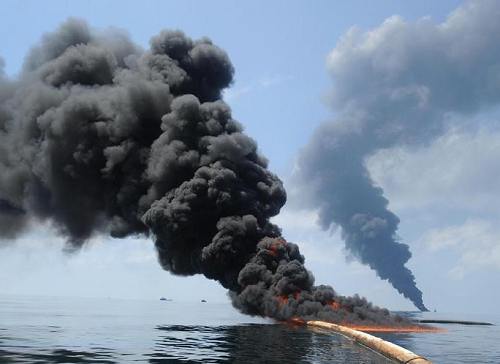 The oil boom, as the name implies, means that it can enclose oil and has the effect of preventing the proliferation of oil. Here to introduce the type and use of the oil boom. First of all, let's look at how the oil boom appears.
The oil boom, as the name implies, means that it can enclose oil and has the effect of preventing the proliferation of oil. Here to introduce the type and use of the oil boom. First of all, let's look at how the oil boom appears. The oil boom invention:
On the Shetland Islands in the North Sea of ​​the United Kingdom, a farmer named Ken Frock Brook invented a method of using machine tools to control oil pollution, which could prevent the oil from the oil tankers from contaminating the coast; It is most effective to treat pollution with barley straw. Radon Rafts not only prevent oil from spreading in the sea, but also absorb oil that is 15 times heavier than itself. In 1992, after an oil tanker crashed near the Shetland Islands, a 22-kilometer long row of grass was placed at sea to protect the bathing beaches and fishing grounds from contamination.
Boom type:
According to the material:
Rubber boom:
When oil spills occur on the surface or on the surface of the sea, in order to prevent the oil layer from spreading, it is easy to remove the oil and limit the oil layer with a boom. The rubber boom is made of special rubber and has high strength, wear resistance, oil resistance and weather resistance. It is suitable for use in harbor waters.
Fire protection boom:
In addition to the characteristics of ordinary oil interceptors to intercept, control and transfer oil spills, they are also used to intercept burning oil spills and surface water bonfires. To prevent the spread of fire, it is particularly suitable for high-fire-level sensitive areas such as oil ports, oil terminals and oil drilling platforms. Fire protection booms can also be used to tow oil spills to a suitable location for combustion treatment. Stainless steel floating body, flexible material with temperature resistance of up to 1000°C and universal quick joints constitute a water fire protection system for fire protection booms, which can be used in tandem with ordinary booms.
Divided by shape:
Fence-like boom: Long strips or square solid buoys are used. Skirt material is embedded with stiffening strips. The freeboard is above the height of the buoyant body and is generally used in low-flowing waters.
Curtain type oil fence: The float body is round, and the skirt body is a continuous flexible material. It has good wave performance and is easy to use and easy to clean. In particular, the inflatable floating body has small storage space, is easy to transport and is suitable for emergency use.
Floatable oil boom:
At present, the boom is being promoted to field cooperation prevention that may lead to oil pollution, such as accident-sensitive areas such as harbor terminals and bathing beaches. This led to the birth of a floating sunken boom, which used a floating hose and the skirt body was composed of a continuous rubber band. It is placed in the water for a long time, and usually sinks into the sea floor. When needed, it can be expanded by buoyancy with a compressor connected to a floating hose, and it floats under the action of a buoyancy force, so it is convenient to use. In the port area, gas booms can also be used to prevent the spread of oil, which is more convenient than floating sinks and quicker to start. It can also work on burning oil surfaces and ice areas, which is very suitable for preventing ship oil pollution.
The principle is to form a porous pipe in a certain shape on the seabed. Compressed air rushes out along the pipe. The floating air bubbles will form a flow on the surface of the sea to prevent the oil from flowing and play a role in confining the oil. And in the port where the tide rises and falls, it is necessary to arrange booms that can adapt to tides and float freely. The special feature of the boom used on the coastline is that it can be located on the beach to protect the coastline from oil pollution.
Emergency self-made “bunker fenceâ€: Due to the presence of meshes, the mesh-shaped boom is very resistant to dragging in water and can be used to contain aggregates of high-viscosity oils floating on the sea.
The flame-retardant boom prevents the burning oil from entering the port or burning the enclosed oil directly in the sea.
In the absence of emergency equipment, it is possible to make self-made simple oil booms, such as wood, bamboo, oil drums, hoses, rubber tires, etc., to form floating booms. It can also be filled with fishing nets, screens, or other network pipes. Straw, coconut shell or ready-made filling material make adsorption boom.
Liquid (chemical) boom:
The surface tension of the water around the oil is reduced to control the diffusion of the oil, so that the oil is concentrated in a certain area to form a certain thickness to facilitate recovery. The reagent has a high cost and limited working time, and is rarely used in large-scale oil spill accidents. The spray volume is generally very low, spraying only about 30 kilograms in a 1 km-wide oil spill contaminated area.
Combination of boom and oil skimmer:
The oil skimmer is a slick oil for water recovery. It can be used alone, or it can be installed on a ship (such as a sewer) to increase maneuverability. It is complementary to the boom. Only timely recovery of the oil slick surrounded by the boom can ensure the safe and reliable use of the boom, which will inevitably lead to the failure of the boom.
Copper Wire Mesh,Wire Netting ,Mesh Screen ,Stainless Steel Wire Mesh
Stainless Steel Wire Mesh Co., Ltd. , http://www.nbwiremeshs.com